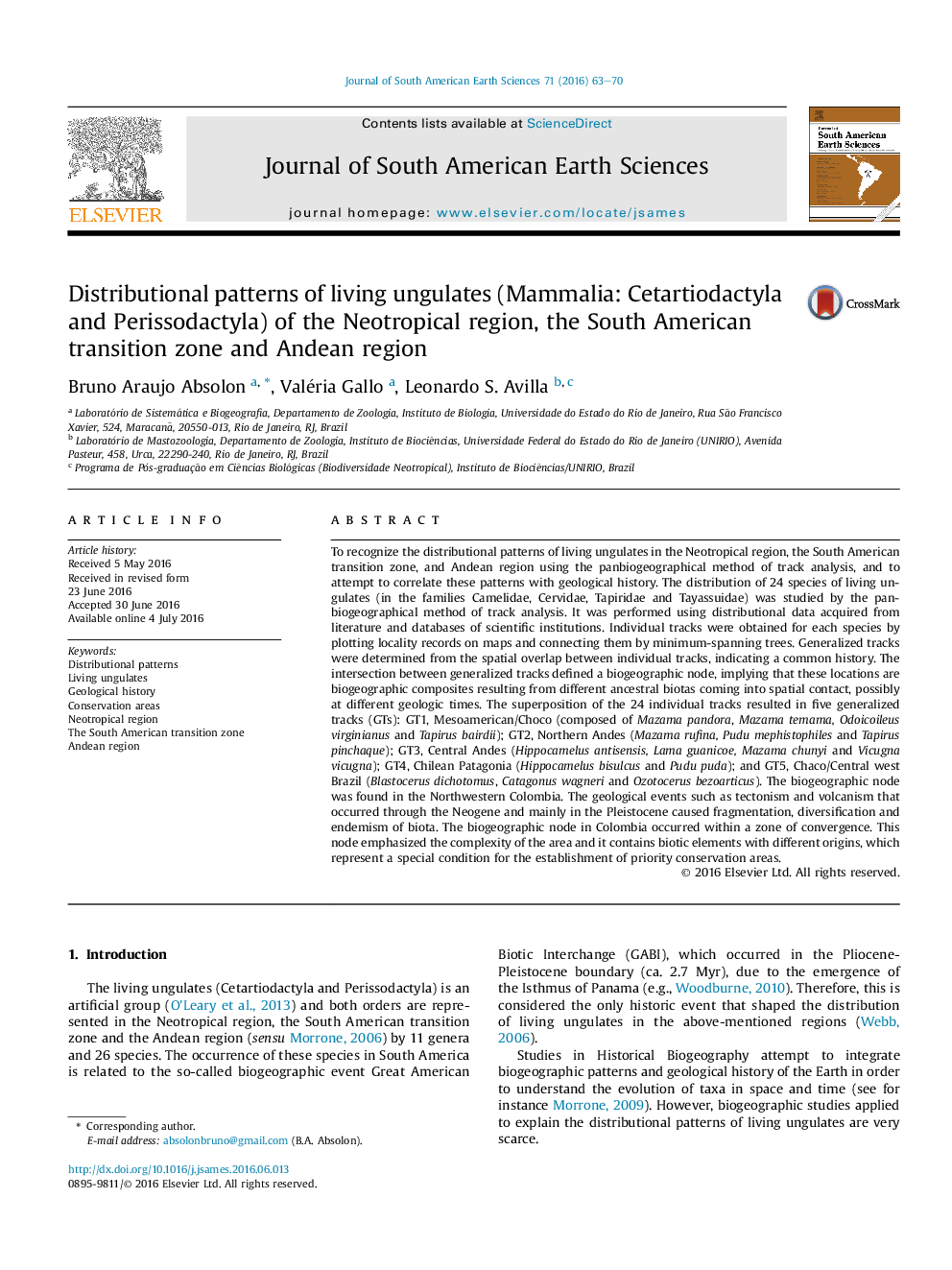| Article ID | Journal | Published Year | Pages | File Type |
|---|---|---|---|---|
| 6431291 | Journal of South American Earth Sciences | 2016 | 8 Pages |
â¢Track analysis proved useful for recovering distributional patterns of ungulates.â¢Geological events in the Pleistocene caused fragmentation of living ungulates.â¢Biogeographic node is important as an indicator of a priority conservation area.
To recognize the distributional patterns of living ungulates in the Neotropical region, the South American transition zone, and Andean region using the panbiogeographical method of track analysis, and to attempt to correlate these patterns with geological history. The distribution of 24 species of living ungulates (in the families Camelidae, Cervidae, Tapiridae and Tayassuidae) was studied by the panbiogeographical method of track analysis. It was performed using distributional data acquired from literature and databases of scientific institutions. Individual tracks were obtained for each species by plotting locality records on maps and connecting them by minimum-spanning trees. Generalized tracks were determined from the spatial overlap between individual tracks, indicating a common history. The intersection between generalized tracks defined a biogeographic node, implying that these locations are biogeographic composites resulting from different ancestral biotas coming into spatial contact, possibly at different geologic times. The superposition of the 24 individual tracks resulted in five generalized tracks (GTs): GT1, Mesoamerican/Choco (composed of Mazama pandora, Mazama temama, Odoicoileus virginianus and Tapirus bairdii); GT2, Northern Andes (Mazama rufina, Pudu mephistophiles and Tapirus pinchaque); GT3, Central Andes (Hippocamelus antisensis, Lama guanicoe, Mazama chunyi and Vicugna vicugna); GT4, Chilean Patagonia (Hippocamelus bisulcus and Pudu puda); and GT5, Chaco/Central west Brazil (Blastocerus dichotomus, Catagonus wagneri and Ozotocerus bezoarticus). The biogeographic node was found in the Northwestern Colombia. The geological events such as tectonism and volcanism that occurred through the Neogene and mainly in the Pleistocene caused fragmentation, diversification and endemism of biota. The biogeographic node in Colombia occurred within a zone of convergence. This node emphasized the complexity of the area and it contains biotic elements with different origins, which represent a special condition for the establishment of priority conservation areas.
